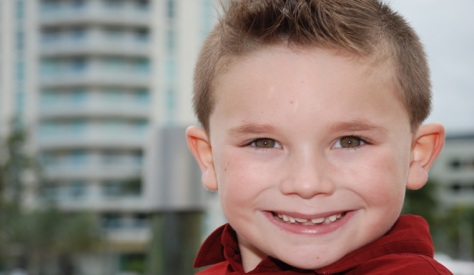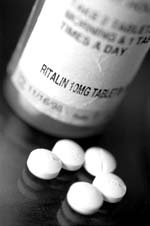If I were to tell you that there is something in our society that has been causing our children to commit suicide as early as their fourth or fifth birthday-and further, that you were funding it- would you remain silent?
While the issue has been gaining momentum within the past few years, there are still only a surprising few who understand the real threats the unmitigated over-prescription of psychotropic drugs has on our children. Sometimes, a tragic event is necessary for us to heed the call to action. Sadly, that event happened last year, and has continued to happen since.
Last year, a seven-year-old boy, under the deadly influence of Lexapro, Zyprexa, and Symbyax, strangled himself with a shower cord while alone in the bathroom. His suicide, largely believed to be inspired by his over-prescribed cocktail of psychiatric drugs, is a preventable and yet, common occurrence within the United States. The almost criminal negligence displayed by his psychiatrist is, sadly, an increasingly regular phenomenon spurred on by the lobbying efforts of big-business pharmaceutical companies. This child’s name was Gabriel Meyers. But there are hundreds of names we don’t know whose lives tragically ended under precisely the same circumstances. Over-prescription of psychotropic drugs is one of the most severe issues plaguing America’s children today, particularly within foster homes and residential treatment centers. Children, behaving poorly because of understandable family circumstances or simply because they need a bit more care, are not given a voice; and despite the best efforts of child advocates, the sound of those who are vocal is drowned out by the dollars of pharmaceuticals and the demands of high powered lobbyists. It is the “War on Drugs” we should be fighting.

The increasingly irresponsible prescribing habits of American psychiatrists is a well-documented phenomenon. In a 7-part study, the Journal News found “a pattern of increasing use” of psychotropic, that is, brain-altering, drugs within Children’s residential facilities. Between 60 and 90% of children in these facilities were taking these treatments; not, as may be expected, to treat a mental disorder, but rather to merely control their behavior. Likewise, a NY State mental health survey found that in 2000, the number of non-institutionalized children ages 6-18 who were taking anti-psychotic drugs hit 532,000 nationwide, up from a mere 50,000 just ten years prior – not including stimulants and anti-depressants, which are the most commonly prescribed drugs in the United States. In fact, the anti-depressant prescription rate is even more alarming. Dr. Mark Olfson of Columbia University’s Medical Center and the New York State Psychiastric Institute, along with Dr. Steven Marcus of the University of Pennsylania, studied data generated from 1996-2005. Their discoveries were disturbing. While the rate of anti-depressant treatment increased from just over 5% to over 10% within the nine year period – an increase from around 13 million Americans to over 27 million – there has been a simultaneous decrease in the number of people undergoing psychotherapy, from 31% to 19%, in recent years. As the authors of the study explained, “these broad trends suggest that antidepressant treatment is occurring within a clinical context that places greater emphasis on pharmacologic rather than psychologic dimensions of care.”

And America isn’t the only country ignoring its youth. Over 17 million children worldwide– ten million of whom live in the United States — have been prescribed drugs so dangerous that regulatory agencies around the world, including in Europe, Australia, and yes, even the United States, have issued warnings on their side effects. Ritalin, which is prescribed to an astronomical proportion of children and teens as a “treatment” for ADHD, has a warning that it can cause suicidal and aggressive behavior. And yet, in 1999, over 8 million children were prescribed the drug – including T.J. Solomon, a 15-year-old at Heritage High School in Conyers, Georgia, who opened fire on and wounded six classmates under its influence. His is not the only high profile example of aggressive behavior spurred on by over-prescription of psychotropic drugs. Eric Harris, of Columbine infamy, killed a dozen students and a teacher before taking his own life under the influence of Luvox, an anti-depressant approved two years prior by the Food and Drug Administration for the treatment of Obsessive Compulsive Disorder. A recent US study indicated that 8 out of 13 school shooters were under the influence of a psychotropic drug during the commission of their crimes. Sadly, the FDA warnings on suicide and aggressive behavior did not curb the pens of the psychiatrists who over-prescribe medications that ultimately kill hundreds of children annually. Ritalin alone is responsible for almost 200 child-deaths a year.
Despite all the data out there, the trends continue. Today, children under the age of five are the fastest-growing segment of the United States non-adult population that is prescribed anti-depressants. Under the age of five. Between 1995 and 1999, antidepressant usage increased 580% in the under six population and over 150% in the 7-12 age group. Some of these children, age four and five, have even succeeded in committing suicide as a result of these medications. In Australia, numbers are trending the same way, with a stimulant prescription rate increasing 34x in the past twenty years. Stimulant prescriptions for children increased over 9,200% in Britain in the eight years between 1992 and 2000.
But it is not just the over-prescription that is disconcerting; it’s the negligence with which doctors prescribe the drugs in the

first place. Parents – and certainly their children – are rarely, if ever, informed of the types of consequences that can be expected as a result of the medication. Rather than focusing on solving the root issue, children are prescribed drugs as a “quick-fix” to behavioral problems – which often results in severe, if not life-threatening, consequences for the child. Seizure. Diabetes. Heart Palpitations. Suicide. Mania. All of these are potential side effects of psychotropic drugs. Dr. Peter Breggin, the director of the International Center for the Study of Psychology and Psychiatry, said that prescribing some of these drugs to children is “like putting cement in the brain of a child.” Studies have demonstrated that psychotropic drugs cause brain atrophy and cause long-lasting mental and physical damage. And yet, we continue to sell our children’s mental health to the highest bidder. While a child may be suffering – their brain literally atrophying away, our doctors are showered with gifts by pharmaceutical representatives. Pens, clocks, pads of paper, and other supplies, emblazoned with the insignia of the offending pharmaceutical, line the offices of thousands of doctors while their patients simultaneously line the walls of the emergency room. In fact, the Journal News found in an analysis of US FDA data, thousands of life-threatening injuries, disabilities, and hospitalizations were directly linked to over-prescription of 12 of the most common psychotropic drugs. One of the worst offenders, Ritalin, has many of the same side-effects as cocaine and yet is prescribed to thousands of new children a year.
The irresponsibility of the US government and pharmaceutical companies must stop, as must our silent acquiescence to their behavior. After all, it is our taxdollars, through Medicaid, that are being used to finance what amounts to at best the control and stifling of children’s creativity and at worst the deaths of hundreds of children a year. And, as is usually the case, the practices are worst within the communities that need the most assistance; foster homes. Georgia spends almost $8 million of Medicaid annually on prescribing these drugs to foster children alone, much of which is used to provide drugs that are not approved for use in children. Laudable efforts have been underway, with child advocates pushing ceaselessly for more oversight and responsibility in treatment. But we can no longer stand by and let them fight this battle for us. Our children’s futures – and their present health – relies on our action, now. In exchange for swag, our psychologists are intentionally overdosing our children, often times inciting them to slash their wrists, hallucinate, or experience sedation.
Foster children already experience some of the worst situations we can imagine. Coming from broken, or as can sometimes be the case, non-existent, homes, they require our attention and care; and most importantly, our support and unwavering commitment to their health and well-being. Many of them are forced to negotiate complex issues and make mature decisions at a young age; and yet, instead of assisting them, instead of allowing them to discover themselves and providing them encouragement and support, we drug them to control their behavior. Most of these children do not suffer from a mental disease. And yet, it is easier to feed them a pill then have a conversation with them. It is easier to take the gifts of pharmaceutical representatives than to defend our voiceless children. It is easier to turn our heads from the injustices and focus on kinder issues, friendlier issues. Now, we may not be able to control who gives a pill to whom, or who receives a gift from whom. But we can control the last part – we can choose not to turn our heads, not to ignore the cries of our children, not to deny them the fundamental freedom we all deserve – the right to pursue happiness, yes; but even before that, the right to live.


One thought on “The “War on Drugs” We Should Be Fighting”